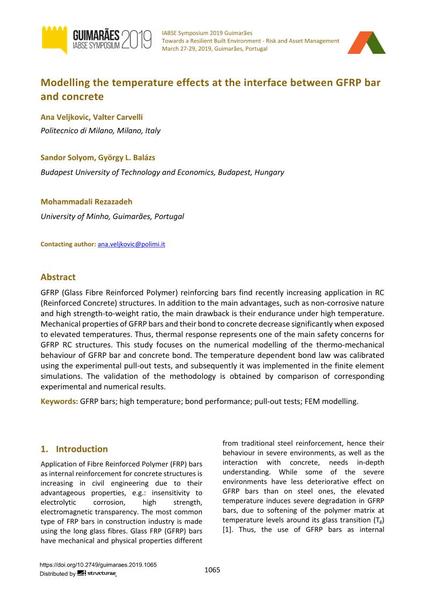Modelling the temperature effects at the interface between GFRP bar and concrete

|
|
|||||||||||
Détails bibliographiques
| Auteur(s): |
Ana Veljkovic
(Politecnico di Milano, Milano, Italy)
Valter Carvelli (Politecnico di Milano, Milano, Italy) Sandor Solyom (Budapest University of Technology and Economics, Budapest, Hungary) György L. Balázs (Budapest University of Technology and Economics, Budapest, Hungary) Mohammadali Rezazadeh (University of Minho, Guimarães, Portugal) |
||||
|---|---|---|---|---|---|
| Médium: | papier de conférence | ||||
| Langue(s): | anglais | ||||
| Conférence: | IABSE Symposium: Towards a Resilient Built Environment Risk and Asset Management, Guimarães, Portugal, 27-29 March 2019 | ||||
| Publié dans: | IABSE Symposium Guimarães 2019 | ||||
|
|||||
| Page(s): | 1065-1072 | ||||
| Nombre total de pages (du PDF): | 8 | ||||
| DOI: | 10.2749/guimaraes.2019.1065 | ||||
| Abstrait: |
GFRP (Glass Fibre Reinforced Polymer) reinforcing bars find recently increasing application in RC (Reinforced Concrete) structures. In addition to the main advantages, such as non-corrosive nature and high strength-to-weight ratio, the main drawback is their endurance under high temperature. Mechanical properties of GFRP bars and their bond to concrete decrease significantly when exposed to elevated temperatures. Thus, thermal response represents one of the main safety concerns for GFRP RC structures. This study focuses on the numerical modelling of the thermo-mechanical behaviour of GFRP bar and concrete bond. The temperature dependent bond law was calibrated using the experimental pull-out tests, and subsequently it was implemented in the finite element simulations. The validation of the methodology is obtained by comparison of corresponding experimental and numerical results. |
||||
